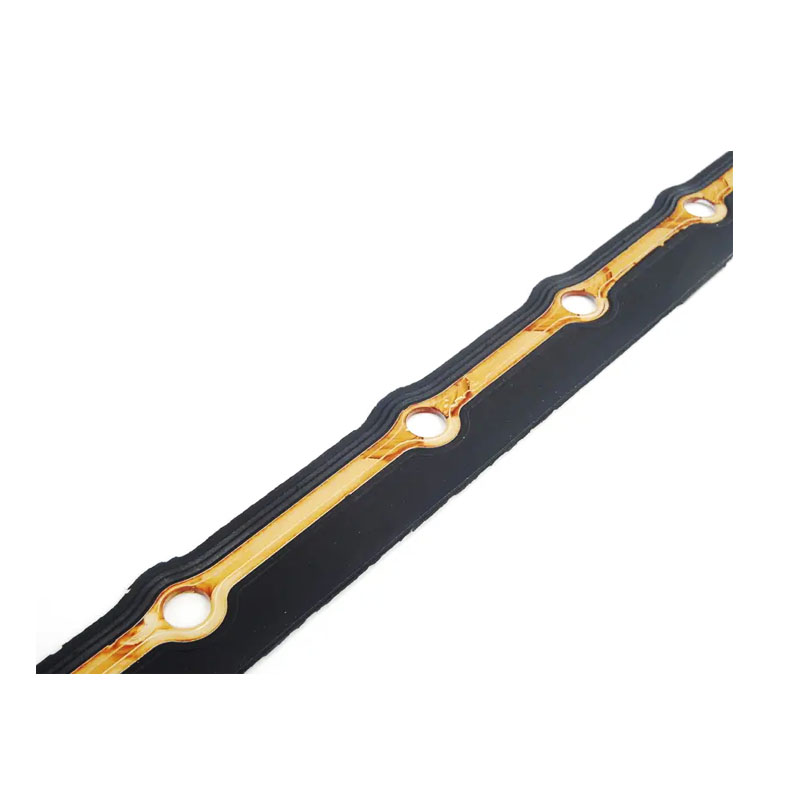axial face seal
Understanding Axial Face Seals A Comprehensive Overview
Axial face seals, commonly employed in various mechanical applications, are crucial components designed to prevent the leakage of fluids while minimizing contamination from external environments. These seals are integral to the functioning of rotating machinery, such as pumps, motors, and gearboxes. Their design and operational capability are vital not only for the efficiency of the devices they are installed in but also for the longevity and reliability of these systems.
What are Axial Face Seals?
Axial face seals are precision-engineered sealing devices that consist of two primary components a stationary part and a rotating part. The stationary face is typically attached to the housing of the machinery, while the rotating face is mounted on the shaft. This configuration allows the seal to create a barrier that prevents fluid from escaping the system while also inhibiting external contaminants from entering.
The primary mechanism of an axial face seal involves the use of a flat surface that provides a rigid contact point between the two faces. Unlike traditional lip seals, which rely on radial compression to function, axial face seals utilize the pressure generated within the system to enhance their sealing capability. This unique attribute allows for lower wear rates and increased performance in high-speed applications.
Advantages of Axial Face Seals
1. Low Friction One of the prominent benefits of axial face seals is their low friction, which results in less heat generation during operation. This characteristic is particularly advantageous in high-speed rotating applications, where excessive heat can lead to premature wear and failure of seals.
axial face seal

2. High Performance under Pressure Axial face seals can perform effectively under high-pressure conditions, making them ideal for hydraulic applications where maintaining pressure tightness is critical.
3. Reduced Contamination These seals provide excellent resistance to external contaminants such as dust, dirt, and water. This quality is essential in environments where equipment is exposed to harsh conditions, ultimately contributing to a longer service life.
4. Ease of Installation and Maintenance The design of axial face seals simplifies installation processes and typically requires less stringent assembly tolerances. This ease of use translates to reduced downtime and maintenance costs for operators.
Applications
Axial face seals are widely used across various industries, including automotive, aerospace, and manufacturing. In the automotive sector, they play a vital role in engine designs and transmission systems. In aerospace, they ensure the integrity of hydraulic systems by preventing fluid loss. Additionally, manufacturing equipment, such as compressors and turbines, benefit from the robustness of axial face seals, enhancing overall operational efficiency.
Conclusion
In conclusion, axial face seals represent a significant advancement in sealing technology, combining efficiency with reliability. Their unique design allows for exceptional performance in demanding environments, contributing positively to the machinery they protect. As industries continue to evolve and push the boundaries of technology, the importance of robust sealing solutions like axial face seals will only grow, ensuring that systems operate smoothly and efficiently while maintaining the integrity of critical fluids and preventing contamination from diverse environmental factors. Understanding and implementing these seals can lead to improved machinery performance, reduced operational costs, and enhanced equipment longevity. As we look toward the future, advancements in materials and design technology will likely further enhance the capabilities of axial face seals, solidifying their role as indispensable components in modern engineering.
-
Simplifying Oil Changes: A Comprehensive Guide to Oil Drain Plugs and Their Variants
News Aug.04,2025
-
Mastering Oil Drain Maintenance: Solutions for Stripped, Worn, and Upgraded Oil Plugs
News Aug.04,2025
-
Fixing Oil Pan Plug Issues: Leaks, Stripped Nuts, and the Right Replacement Solutions
News Aug.04,2025
-
Everything You Need to Know About Oil Drain Plugs: Sizes, Fixes, and Upgrades
News Aug.04,2025
-
Choosing the Right Oil Drain Plug: A Guide to Sizes, Materials, and Drain Innovations
News Aug.04,2025
-
A Complete Guide to Automotive Drain Plugs: Types, Problems, and Innovative Solutions
News Aug.04,2025
-
The Ultimate Guide to Car Repair Kits: Tools and Essentials Every Driver Should Own
News Aug.01,2025
Products categories















